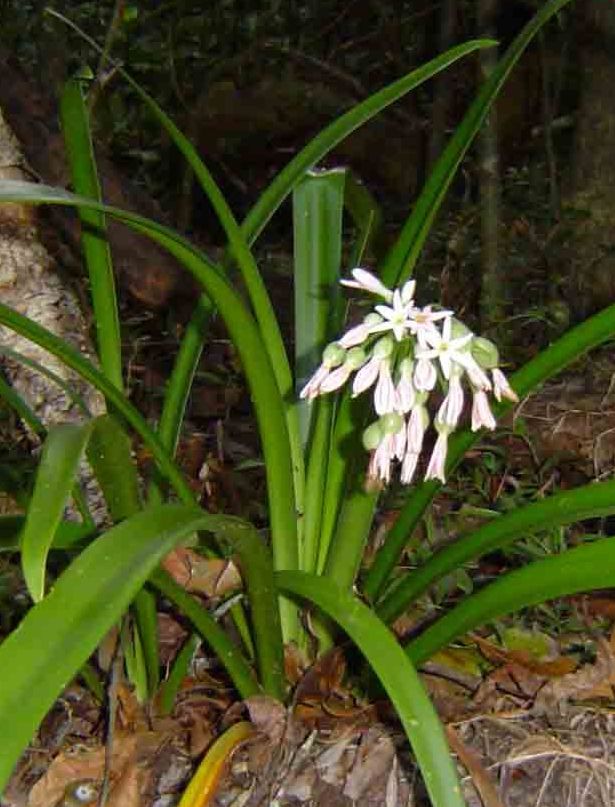Cliviinae on:
[Wikipedia]
[Google]
[Amazon]
Cliviinae is a small
 Bulbless
Bulbless
subtribe
Subtribe is a taxonomic category ranking which is below the rank of tribe and above genus. The standard suffix for a subtribe is -ina (in animals) or -inae (in plants
Plants are predominantly photosynthetic eukaryotes of the kingdom Plant ...
of Haemantheae
Haemantheae are a tribe of subfamily Amaryllidoideae (family Amaryllidaceae). They are herbaceous monocot perennial flowering plants with a predominantly African distribution. Three subtribes are proposed and six genera including the type genus, ...
, and therefore within the African clades
A clade (), also known as a monophyletic group or natural group, is a group of organisms that are monophyletic – that is, composed of a common ancestor and all its lineal descendants – on a phylogenetic tree. Rather than the English term, t ...
of Amaryllidoideae
Amaryllidoideae (Amaryllidaceae ''s.s.'', amaryllids) is a subfamily of monocot flowering plants in the family Amaryllidaceae, order Asparagales. The most recent APG classification, APG III, takes a broad view of the Amaryllidaceae, which then ...
. It consists of two genera
Genus ( plural genera ) is a taxonomic rank used in the biological classification of living and fossil organisms as well as viruses. In the hierarchy of biological classification, genus comes above species and below family. In binomial nomenclat ...
, ''Clivia
''Clivia'' is a genus of monocot flowering plants native to southern Africa. They are from the family Amaryllidaceae, subfamily Amaryllidoideae. Common names are Natal lily or bush lily.
They are herbaceous or evergreen perennial plants, with g ...
'', and ''Cryptostephanus
''Cryptostephanus'' is a genus of African plants in the Amaryllis family, native to Kenya, Tanzania, Angola, Mozambique, Zimbabwe and Namibia. Its closest relative is ''Clivia'', with which it shares some characters, including thick, fleshy root ...
''.
Description
 Bulbless
Bulbless rhizomatous
In botany and dendrology, a rhizome (; , ) is a modified subterranean plant stem that sends out roots and shoots from its nodes. Rhizomes are also called creeping rootstalks or just rootstalks. Rhizomes develop from axillary buds and grow hori ...
perennial
A perennial plant or simply perennial is a plant that lives more than two years. The term ('' per-'' + '' -ennial'', "through the years") is often used to differentiate a plant from shorter-lived annuals and biennials. The term is also wide ...
plants. ''Clivia'' has showy orange or yellow flowers, while ''Cryptostephanus'' has smaller flowers with a paraperigone that had them erroneously classified with Narcissus
Narcissus may refer to:
Biology
* ''Narcissus'' (plant), a genus containing daffodils and others
People
* Narcissus (mythology), Greek mythological character
* Narcissus (wrestler) (2nd century), assassin of the Roman emperor Commodus
* Tiberiu ...
in the past. it is also the only Haemantheae genus with a phytomelanous seed
A seed is an embryonic plant enclosed in a protective outer covering, along with a food reserve. The formation of the seed is a part of the process of reproduction in seed plants, the spermatophytes, including the gymnosperm and angiospe ...
testa.
Taxonomy
For the early taxonomic history of these two genera, see Meerow and Clayton (2004). ( Traub described this grouping astribe
The term tribe is used in many different contexts to refer to a category of human social group. The predominant worldwide usage of the term in English language, English is in the discipline of anthropology. This definition is contested, in p ...
Clivieae in his 1963 monograph on the Amaryllidaceae
The Amaryllidaceae are a family of herbaceous, mainly perennial and bulbous (rarely rhizomatous) flowering plants in the monocot order Asparagales. The family takes its name from the genus ''Amaryllis'' and is commonly known as the amaryllis fa ...
, based on the type genus
In biological taxonomy, the type genus is the genus which defines a biological family and the root of the family name.
Zoological nomenclature
According to the International Code of Zoological Nomenclature, "The name-bearing type of a nominal f ...
''Clivia''. . Subsequently, the Müller-Doblies' reduced it to a subtribe and placed it within the Haemantheae. Later molecular phylogenetic
Molecular phylogenetics () is the branch of phylogeny that analyzes genetic, hereditary molecular differences, predominantly in DNA sequences, to gain information on an organism's evolutionary relationships. From these analyses, it is possible to ...
research has confirmed this placement, with Cliviinae being one of three subtribes of Haemantheae.
Phylogeny
The Cliviinae are placed within the Haemantheae as follows:Subdivision
* ''Clivia
''Clivia'' is a genus of monocot flowering plants native to southern Africa. They are from the family Amaryllidaceae, subfamily Amaryllidoideae. Common names are Natal lily or bush lily.
They are herbaceous or evergreen perennial plants, with g ...
'' (5 species)
* ''Cryptostephanus
''Cryptostephanus'' is a genus of African plants in the Amaryllis family, native to Kenya, Tanzania, Angola, Mozambique, Zimbabwe and Namibia. Its closest relative is ''Clivia'', with which it shares some characters, including thick, fleshy root ...
'' (2 species)
Distribution and habitat
''Clivia'' is found in summer rainfall regions, asherbaceous
Herbaceous plants are vascular plants that have no persistent woody stems above ground. This broad category of plants includes many perennials, and nearly all annuals and biennials.
Definitions of "herb" and "herbaceous"
The fourth edition of t ...
understory
In forestry and ecology, understory (American English), or understorey (Commonwealth English), also known as underbrush or undergrowth, includes plant life growing beneath the forest canopy without penetrating it to any great extent, but abov ...
plants of coastal and Afro-montane forest, while ''Cryptostephanus'' are plants of savanna
A savanna or savannah is a mixed woodland-grassland (i.e. grassy woodland) ecosystem characterised by the trees being sufficiently widely spaced so that the canopy does not close. The open canopy allows sufficient light to reach the ground to ...
or forest habitats.
Ecology
Butterfly and sunbird pollination.References
Bibliography
* * * * * * * * *External links
{{Taxonbar, from=Q23012142 Amaryllidoideae Garden plants of Southern Africa Flora of Southern Africa Flora of Africa Plant subtribes